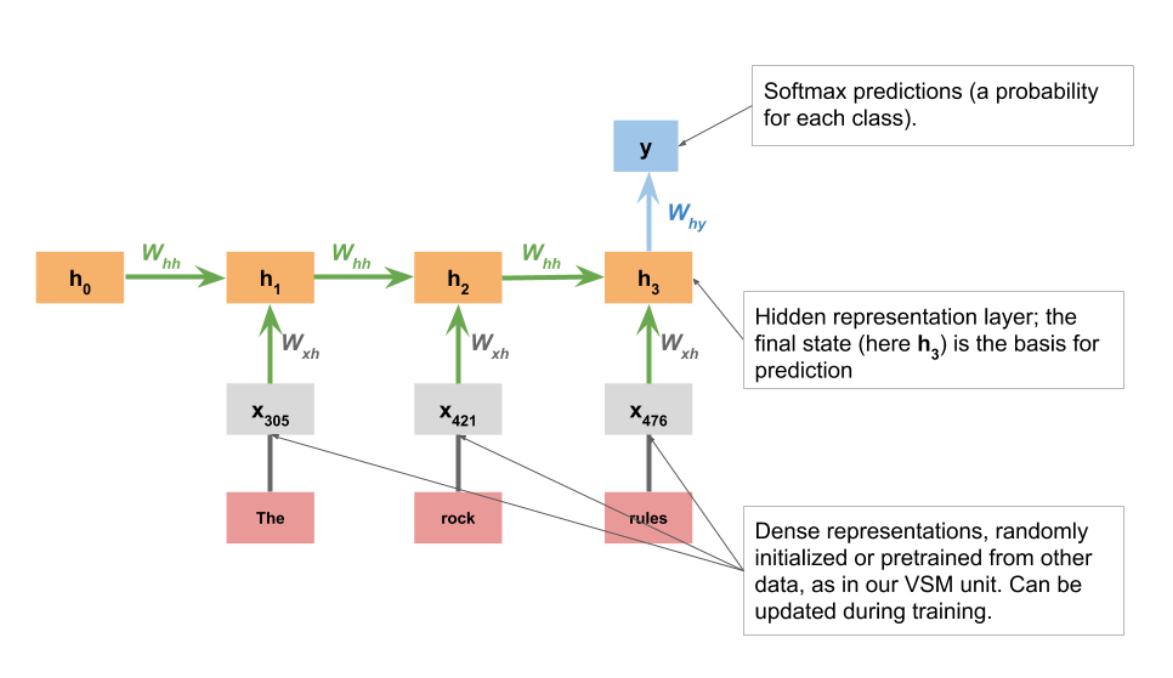Supervised sentiment analysis #
Tokenization #
Whitespace tokenizer #
Very simple, just splits sentences into words by spacing. Example:
> whitespace_tokenizer("The quick fox jumped over the lazy dog.")
['The', 'quick', 'fox', 'jumped', 'over', 'the', 'lazy', 'dog.']
Note: simplest version will not take punctuation into account, which could be disruptive for using with VSMs
Sentiment-aware tokenizer #
Ideally, a tokenizer would
- Isolate emoticons
- Respects domain-specific markup (i.e., hashtags and
@-mentions) - Uses underlying markup
- Capture masked curses such as
f@#$%ing - Preserve meaningful capitalization
- Regularizes lengthening (i.e.,
YAAAAAY=>YAAY) - Captures multiword expressions such as idioms such as
out of this world
ex:
sentiment_tokenizer("@NLUers: can't wait for the Jun 9 #projects! YAAAAAAY!!! >:-D http://stanford.edu/class/cs224u/.")
['@nluers', ':', 'can\'t', 'wait', 'for', 'the', 'Jun_9', '#projects', '!', 'YAAAY', '!', '!', '!', '>:-D', 'http://stanford.edu/class/cs224u/', '.']
Most of these criteria are met by nltk.tokenize.casual.TweetTokenizer (for Tweets)
Other preprocessing techniques #
- Part-of-speech tagging
- Tag each word as verb/noun/adjective/adverb/… and pre-apply positive/negative sentiment to each word-POS pair
- Limits: (Word, POS) pair can have two sentiments in different contexts
- Simple negation marking
- Append a
_NEGsuffix to every word appearing between a negation and a clause-level punctuation mark - Example:
No one enjoys it.becomes['no', 'one_NEG', 'enjoys_NEG', 'it_NEG', '.']
- Append a
Hyperparameter search #
- Model parameters: values learned as part of optimizing the model
- Hyperparameters: parameters set outside of optimization
- GloVe or LSA dimensionality
- GloVe
x_maxandalpha - Regularization terms, hidden dimensionalities, learning rates, activation functions
- Must be done to properly get to “optimal” model
- Done only with train/development data
Feature representation #
N-grams #
- Unigrams: “bag-of-words” models
- Generalize to “bag-of-ngrams”
- Dependent on tokenization scheme
- Can be combined with preprocessing steps with
_NEGmarking - Creates very large, very sparse feature representations
- Generally fails to directly model feature relationships
Other ideas #
- Lexicon-derived features
- Negation marking
- Modal adverbs
- Length-based features
- Thwarted expectations: ratio of positive to negative words
RNN classifiers #
